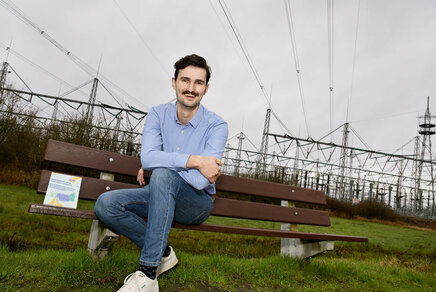The clock is ticking: urgent action needed to meet 1.5 degree Celsius goal
Heleen de Coninck and four other Dutch climate experts argue for a far-reaching transformation of energy supply, industry, transport and agriculture.

The goal of the Paris climate agreement - to limit global warming to 1.5 degrees Celsius - will be out of sight unless countries collectively show more ambition and take immediate action. This is the view of Heleen de Coninck and four other Dutch climate experts who contributed to the IPCC report published on Monday 4 April. Such an acceleration and strengthening of policy measures is still possible - but requires a far-reaching transformation of the systems that underpin our economy, such as energy, industry, transport and agriculture. The next few years will be decisive.
The increase in global greenhouse gas emissions has never been greater than in the past decade, even if the relative increase flattened. Despite a decline in energy intensity (emissions per euro earned) and lower carbon energy production (emissions per unit of energy produced), growth in industry, transportation, energy production, agriculture and the built environment has led to rising emissions.
Regional differences are large though. In 2019, economically developed countries accounted for 24 percent of emissions and the poorest countries for 3 percent. However, a growing number of countries - especially rich ones - have seen their emissions decline over the past decade, not only because of policy changes but also because of autonomous trends.
Current pledges wholly inadequate
According to the IPCC, the current pledges by countries for emission reductions are insufficient to keep the expected temperature rise below 1.5 degrees. This means that ithout tightening up the current plans, the world is heading for a warming of about 3.2 degrees by 2100.
For 1.5 degrees of warming, most calculations indicate that global emissions should peak before 2025, be almost halved by 2030, and reach zero by 2050, before becoming negative. The latter would imply the removal of large amounts of CO2 from the atmosphere.
To stay well below 2 degrees there is a little more room, but here too emissions must fall sharply in the coming years and reach zero a few decades later. Current climate policies are still completely inadequate and will at best result in a stabilization of emissions by 2030.
Detlef van Vuuren of the Netherlands Environmental Assessment Agency (PBL) and Utrecht University: "The new IPCC report shows that the next few years will be crucial to meeti the Paris Agreement. The road to the goal has become a narrow one. Only if we can significantly reduce global emissions before 2030 are the Paris targets still within reach. It is crucial that we achieve net zero emissions by the middle of the century. This means that investments now must already focus on this goal."
![[Translate to Engels:] Heleen de Coninck, een van de hoofdauteurs van het IPCC-rapport](https://assets.w3.tue.nl/w/fileadmin/_processed_/3/d/csm_heleen_fc4f57ddf8.jpg)
Transformations in sectors
Reducing emissions requires a far-reaching transition of key economic sectors including energy, transport and agriculture. In energy, for example, this involves reducing energy consumption, using energy more efficiently, and using low-carbon energy sources, in industry and the built environment, among others.
In some industrial sectors, it is not possible to achieve zero CO2 emissions. Here removal of CO2 from the air is needed to offset the residual emissions.
In cities, renovation and repurposing of buildings, urban design, and alternative modes of transport, such as cycling, walking, and public transport offer opportunities to efficiently reduce emissions.
Agriculture and forestry can reduce greenhouse gas emissions directly, sequester additional CO2 and also contribute through substitution of energy and greenhouse gas intensive raw materials and materials. In doing so, attention must be paid to possible adverse effects on food security and biodiversity.
Technology
The cost of various low-emission technologies, such as those for renewable energy, has fallen sharply since 2010 due to innovation policies and learning effects, among other things. Also, tighter mitigation policies and national climate laws have led to more investment in low-carbon technologies and infrastructure. There is also a lot of private interest in forest restoration.
At the same time, more public and private investment still goes to fossil fuels than to mitigation and adaptation.
According to the IPCC, a package of policy tools, including both regulatory and market instruments, is needed to significantly reduce emissions and spur innovation. With measures costing less than US$100 per ton of CO2 reduced, global emissions can be halved by 2030 compared to 2019.
Behavioral changes, such as energy conservation, renewable energy and transport, and reduction of meat and dairy consumption in rich countries can also make a large contribution to emissions reduction in the short and longer term (40-70 percent by 2050) while contributing to well-being and health.
Heleen de Coninck (professor of Socio-Technical Innovation and Climate Change at TU/e department of Industrial Engineering and Innovation Sciences): "What is new in this report is that it outlines the opportunities to prevent the most serious climate change yet: opportunities in behavioral change, political action, innovation and international cooperation, for example in financing and investment."
Land use and carbon sequestration
Deforestation and agriculture are responsible for 13 to 21 percent of total greenhouse gas emissions worldwide. The IPCC report shows that improved land use and additional CO2 sequestration can make a significant contribution to meeting climate targets, precisely to quickly offset emissions that cannot be avoided, and to produce renewable raw materials.
The report also makes clear that the supply of renewable raw materials and energy (biotextiles, building with wood, biofuels, biochemistry) is intertwined with sectors such as transportation, industry, and energy. This is a big step forward, but also requires good agricultural and forestry policies and implementation with attention to biodiversity. According to the IPCC, this is necessary in many scenarios to reduce global warming to 1.5 degrees after it has been exceeded.
Gert-Jan Nabuurs of Wageningen University: "Taken together, all measures in agriculture and forestry (protection of forests and peat bogs, forestation, reduced emissions of methane and nitrous oxide, better forest management and construction with wood, biomass, reduction of food waste, and agricultural soil management) can contribute about 15 percent to the entire solution, or 8-14 gigatonnes less CO2 emissions in 2030. This additional sequestration is important to also offset hard-to-avoid emissions over time and to move toward negative emissions.
Climate action and sustainable development
Another important conclusion of the report is that sustainable development is not possible without climate mitigation, and climate mitigation is not possible without sustainable development. To a large extent, climate action goes hand in hand with achieving the United Nations Sustainable Development Goals (SDGs), but sometimes goals are also at odds.
Limited economic, social, and institutional resources in low- and middle-income countries often lead to high levels of vulnerability and low adaptive capacity. For example, the sharp drop in cost of technologies for solar power and electric cars has positive implications for reducing emissions, but negative implications for the environment and people-think of the extraction of raw materials for batteries in low- and middle-income countries.
Equity is therefore an important prerequisite for the use of these technologies, within countries, but also across national borders.
Media contact
More on Sustainability



Latest news



